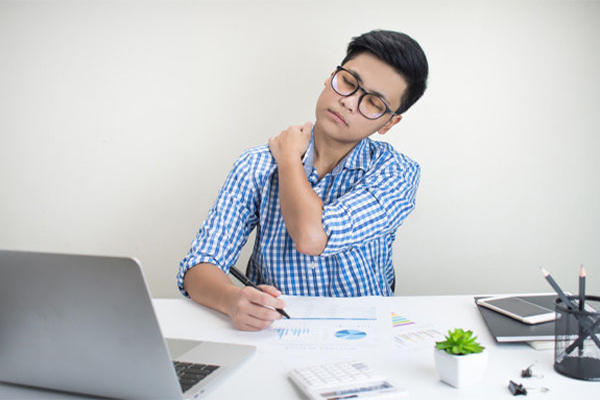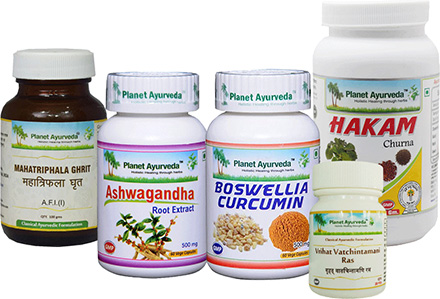Management of Bernhardt-Roth Syndrome in Ayurveda
Abstract
In this article our main focus is on the meralgia paresthetica, a neurological ailment. It is a disorder that occurs due to nerve compression which might be due to our reckless behaviour or sometime due to the injury to underlying structures that will put pressure on the nerve. The tridosha theory (three principle energies of our body vata, pitta and kapha) of Ayurveda focuses primarily on treating the ailment by doing detailed analysis of the involved dosha and then we gave treatment to balance the vitiated dosha. So let’s start discussing that in detail

Introduction
This is a chronic neurological disorder that involves lateral cutaneous nerve of the thigh, so also known as “lateral femoral cutaneous neuropathy” Another name of this disorder is “skinny pants syndrome” as there is a great hike in teenagers wearing skin adhesive trousers or tight trousers. It is also popularly known as “bernhardt-roth syndrome” after the name of two neurologists- Martin Bernhardt (a german neuropathologist and Vladimir Karlavich Roth (a russian neuropathologist). As per Ayurveda we can correlate this disease with “siragat vatavyadhi” as there is an involvement of a branch of the femoral nerve.
What is Meralgia Paresthetica
It is defined as a neurological condition in which there is presence of numbness or pain in the outer aspect of the thigh due to the injury to a nerve.
Causes
- The most common cause of this is the compression of lateral femoral cutaneous nerve when it passes between upper portion of hip bone (ilium) and inguinal ligament (near anterior superior iliac spine, ASIS)
- Less commonly it is due to the damage to nerve by underlying pathologies such as:
- Trauma
- Any neurological lesion
- As a complication of diabetes, diabetic neuropathy
- Stand on legs for a longer duration.
- Extreme use of leg exercises.
- Due to medical injury to the nerve during an operative procedure.
According to Ayurveda common cause of vata vyadhi known as “nidan” are mentioned in below listed shloka:

(Charak chikitsa 28/15-17)
- Due to intake of rough, cold, little and light food.
- Excessive use of coitus
- Sleep deprived
- Faulty therapeutic management.
- Elimination of impurities from the blood in excess amount.
- Over fasting.
- Emaciation due to anxiety, grief and illness.
- Use of an uncomfortable seat and bed.
- Anger
- Sleep during the day.
- Suppression of natural urges of urine and stool.
- Injury to the vital organs.
- Falling down from elephants, horses and other fast vehicles.
Due to the above mentioned causes, vayu gets aggravated and fills up the vacant channels in the body and produces various ailments pertaining to the entire body or one part of the body.
Clinical Features
It includes the signs and symptoms. A symptom means the general complaints along with patients present in front of the physician. Signs: It means what a physician notices himself by observing the patient’s condition. In this particular disease following below listed signs are noticed by a physician:
They are as follow:
- Mild body ache
- Emaciation
- Pulsations in the body.
- Numbness in the affected leg.
- Constriction or stiffness in the leg.
- Piercing types of pain in the leg.
Diagnosis
- By proper history taking.
- General physical examination focuses more on the pelvic examination.
- Electromyography (EMG)- In this examination study of affected nerve conduction is done.
- Radiological examination:
- X ray
- CT scan
- MRI
According to Ayurveda:
The two most preferred diagnostic procedures used by a physician are as follow:
Trividh pariksha (Group of 3 diagnostic procedures)
- Darshan- Diagnosis is made by visual examination of the symptoms.
- Sparshan- Physician uses tactile examination to evaluate whether skin is cold/hot.
- Prashan– Physicians ask direct questions from the patient, to evaluate the root cause of the disease i.e. history taking.
Asthavidh pariksha (set of 8 examination procedure)
- Nadi pariksha – By palpating the pulse rate of the patient.
- Mutra pariksha – By examining the urine of the patient.
- Mal pariksha– By stool examination.
- Jivha pariksha– By examining the tongue whether coated or not.
- Shabad pariksha– By listening to the natural sound within the body like intestinal sound (peristalsis) sounds of moving body fluids.
- Sparsh pariksha-By observing the patient skin texture whether it is cool, wet or dry.
- Drik pariksha– When a physician inspects patient symptoms through his/her eyes.
- Akriti pariksha-When a physician evaluates the general appearance of a patient whether he/she looks dull, lethargic or fatigued etc.
Treatment
It depends on the severity of the condition: Firstly Focuses On The Preventive Aspects:
- Try to remove the cause of compression of nerves by modifying patient behavior.
- Advise patients to wear loose clothing.
- In case of obesity- Weight loss should be encouraged.
- Avoid harsh leg exercises.
- Go for effective physical therapy such as stretching and massage.
- Perform regular exercise to strengthen abdominal muscles.
Medication Therapy
- Anti inflammatory drugs- Non steroidal anti-inflammatory drugs (NSAIDS) helps to relieve inflammation in the affected nerve.
- Analgesics – to aid in pain associated with the nerve contraction.
According to Ayurveda
Ayurveda deals with such ailment by two most common treatment protocols. One is panchakarma therapy (detoxification procedures) and another is san shaman chikitsa in this oral medication is given to the patient to balance the vitiated three principle energies of our body (vata, pitta and kapha)
(A). Sanshodhan Chikitsa (detoxification procedure)- As meralgia paresthetica arises due to vitiated “vata dosha” so our treatment modality also focuses on balancing the aggravated vayu (vata dosha).
- Sanehan– Smoothing the body dosha’s by using herbal ghrit/oil.
- Svedan– Semi-hot medicated kwath is sprayed on the patient’s body by a specially made swedan yantra (instrument).
- Basti (Enema) – It is the best procedure for balancing the vata dosha within the body. In this herbal kwath (decoction) is inserted into the anal route of the patient and it will take out the pacified vata dosha with the faecal matter.
- Kati basti– in this a frame made with the help of udad dal flour and herbal oil is poured into this frame, keep it as it is for some time ideally for 45 minutes, change the oil with soaked cotton bandage and pour freshly lukewarm oil in it.
(B).Sanshaman Chikitsa: Classical san shaman chikitsa mentioned in our ancient text for vata vyadhi is as follow:
1. Rasa/ bhasma
- Vata Chintamani rasa
- Rasraj ras
- Vatari rasa
Dosage: 125-250 mg with honey after meal.
2. Churna
- Ashwagandha churna
- Panchkol churna
Dosage: 2-5 gram with lukewarm water or honey after a meal.
3. Kawath
- Maharasnadi kwath
- Mashbalaadi kwath
Dosage: 20-40 ml with lukewarm water.
4. Tail for local application
- Rason tail
- Bala tail
- Mahamash tail
Dosage – Apply lukewarm oil locally through gentle massage over the affected leg.
5. Guggul
- Yograj guggul
- Sihnaad guggul
Dosage: 500gram to 1 gram with plain water after meals.
6. Rasayana Yog
- Brahm rasayana
- Chyawanparash
Dosage: 5-10 gram with milk or water.
Herbal Remedies for Meralgia Paresthetica by Planet Ayurveda
Planet Ayurveda is a leading herbal manufacturing unit serving people worldwide with their holistic approach of healing. Their herbal products are made under the guidance of Ayurveda experts and are very effective in maintaining a healthy and sound body as they are completely pure and organic in nature free from harmful chemicals and preservatives. They offer various herbal formulations that works really well in meralgia paresthetica, some of them are as follow:
- Ashwagandha Capsules
- Boswellia Curcumin
- Vrihat Vatchintamani Ras
- Hakam Churna
- Mahatriphala Ghrit
Products Description
1. Ashwagandha Capsules
This capsule contains pure and standardized extract of a very potent natural herb called ashwagandha (Withania somnifera). It possesses ‘brahmaniya’ (bulk promoting property) that helps in increasing the body weight. It also has great antioxidant properties that will boost up the immune system and helps to develop strong immunity power to combat ailments like meralgia paresthetica.
Dosage: 1 twice daily.
2. Boswellia Curcumin
It possesses great anti-inflammatory and antifungal properties so helps in relieving pain and inflammation associated in meralgia paresthetica. It is also very good for your skin functioning which keeps the nervous system healthy & helps you to fight with ailment like meralgia paresthetica. It is an effective herbal combination of shallaki (Boswellia serrata) and haridra (Curcuma longa).
Dosage: 2 twice daily.
3. Vrihat Vatchintamani Ras
This herbal formulation helps in balancing the vata dosha level within the body as it contains bhasma of swarna (gold), rajat (silver), abhraka (mica), loha (iron) etc. The calx of these minerals works on the doshas level by their active principle so it works really well in vata vyadhi such as pain, tingling sensation and numbness and all these symptoms are common complaints of meralgia paresthetica patients.
Dosage: 1 twice daily (chew it with warm ghee).
4. Hakam Churna
This powdered herbal formulation helps in regulating healthy body metabolism that helps in digestion of food we intake. As the patient of meralgia paresthetica generally suffers from constipation this herbal powder works really well for them. It contains natural herbs such as kalonji (Nigella sativa), methi (Trigonella foenum-graecum), chandrashoor ( Lepidium Sativum) etc.
Dosage: 1 tsp twice daily with warm water.
5. Mahatriphala Ghrit
Mahatriphala ghrita is a classical ayurvedic medicine in oil form prepared using triphala (three myrobalans), goghrita (cow’s ghee) and amazing other herbs. This oil preparation pacifies all the three dosha but mainly calms pitta and vata dosha. Triphala mainly does vata anulomana, improves the coordination of nerves and does sroto shodhan (clearance of obstructed channels). This formulation aids in managing symptoms like Mild body ache, Pulsations in the body, Emaciation, Constriction or stiffness in the leg , Numbness in the affected leg and Piercing types of pain. Along with Bernhardt roth syndrome this mesmerizing oil preparation can be given in numerous other neurological conditions like epilepsy, cataract, Macular degeneration etc.
Dosage: 1 tsp twice daily with warm water.
Contact Planet Ayurveda to provide you the costing / ordering and delivery information at – costing.planetayurveda@gmail.com or call at +91-172-5214030 Or Check Website – www.PlanetAyurveda.com
Conclusion
Thus now we can conclude that Ayurveda has great results in meralgia paresthetica. If you are considering opting for ayurvedic treatment, consider planet ayurveda as your prime choice. Their herbal medications are completely pure and organic. You can directly visit us at our clinic located at Mohali punjab or can send your query on our official email id- herbalremedies123@yahoo.com.
Dr. Vikram Chauhan
Latest posts by Dr. Vikram Chauhan (see all)
- Best Herbs That Kill Cancer Cells - December 12, 2023
- How to treat optic neuritis in ayurveda with herbal remedies - December 11, 2023
- Treatment of Sarcoidosis in Ayurveda with Herbal Remedies - November 20, 2023
- Vibhitaki/Baheda (Terminalia bellirica)- Benefits, Medicinal Uses, Dosage & More - November 18, 2023
- Chylous Ascites Causes Symptoms and Treatment in Ayurveda - October 4, 2023






